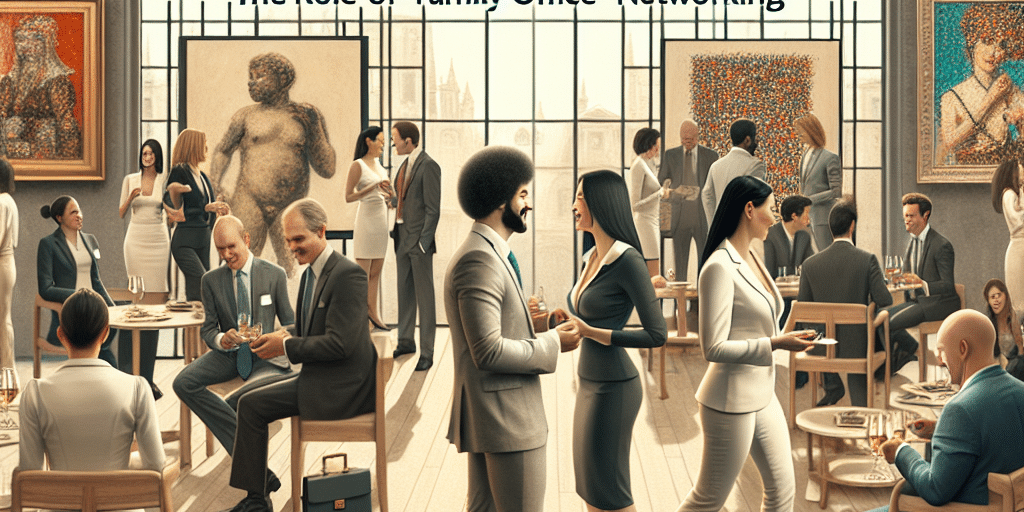In today’s world, where wealth management is as much about networking as it is about financial acumen, private art clubs are increasingly becoming a focal point for family offices. These exclusive spaces, offering more than just a venue for art enthusiasts, are pivotal in fostering relationships that unlock new opportunities for investment, collaboration, and growth.
The Intersection of Art and Investment
Art has long been viewed as a stable investment, often growing in value over time while providing a hedge against inflation. Family offices, tasked with preserving and growing wealth across generations, are increasingly recognizing the potential art holds not just as a financial asset but also as a cultural and social one. Private art clubs serve as a bridge that connects affluent families with a curated selection of artworks and high-value networking opportunities.
These clubs often feature a mix of exhibitions, talks, and private sales, bringing together collectors, artists, and investment specialists. By exposing family offices to a blend of art and investment discussions, these clubs create a fertile ground for strategic partnerships and shared ventures. The confluence of art appreciation and investment strategy can lead to lucrative opportunities for those keen to explore this uncharted territory.
Creating Exclusive Networking Opportunities
One of the primary advantages of private art clubs is their ability to facilitate networking among high-net-worth individuals. Family offices are typically highly selective about the relationships they develop; in this context, a private art club becomes a sanctuary where shared interests and values can lead to enduring connections.
These clubs often host exclusive events, from intimate dinners with renowned artists to panel discussions featuring thought leaders in the art and finance worlds. Such settings allow members to engage in conversations that can spark innovative ideas and potential collaborations—ranging from co-investing in art to exploring joint philanthropic ventures.
A Hub for Knowledge Sharing
Beyond networking, private art clubs serve as hubs for knowledge sharing. Family offices can benefit from educational sessions tailored to the intricacies of art investing. Experts may provide insights into market trends, valuation techniques, and the intricacies of provenance and authenticity—knowledge that is critical for any serious investor.
Moreover, navigating the complexities of the art world can be daunting, especially for those who may not have a background in it. Educational initiatives, workshops, and discussions within these clubs empower families to make informed decisions about their art investments, enhancing both their portfolios and their cultural appreciation.
Cultivating a Sense of Community
The unique environment of private art clubs fosters a sense of community among like-minded individuals. For family offices, this is particularly valuable; forming a network with others who share similar goals, values, and interests can provide emotional support and strategic guidance.
Club members often have access to exclusive exhibitions or private collections, giving them a first-hand look at major works and emerging artists. This not only enhances their art collection but also instills a sense of belonging in an elite circle that values art both as a passion and an opportunity.
Philanthropy and Social Impact
In recent years, there has been a growing trend among family offices to focus on social impact through their investments. Private art clubs can play a vital role in facilitating philanthropic initiatives by connecting members with charitable organizations that support the arts.
Through collaborations and sponsorships, family offices can engage in projects that contribute to cultural enrichment, community development, and education. Such endeavors not only amplify the social value of art but also bolster the reputations of the families involved, aligning their financial interests with their philanthropic goals.
Conclusion
Private art clubs have emerged as significant players in the realm of family office networking. By merging the worlds of art and finance, they create unique opportunities for relationship building, knowledge sharing, and philanthropy. In a landscape where strategic networking can determine success, these clubs enable family offices to unlock new avenues for growth and collaboration.
As the art market continues to evolve, so too will the roles that these exclusive spaces play in shaping the future of family wealth management. For those willing to embrace the intersection of art and opportunity, the rewards can be both financially lucrative and personally enriching. Investing in art—within the welcoming framework of a private art club—could just be the key to unlocking a world of possibilities.










